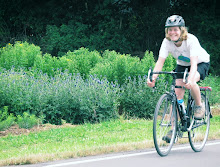There are two great things about Over: The American Landscape at the Tipping Point. One: Pictures? On National Public Radio’s website? Fret all you want about journalism dying; there really are some “old” media outlets embracing the idea of multimedia content, and doing it with quality. It makes sense for NPR to embrace slideshows as a way of presenting information – for those of us who spend way too much time reading (thanks, humanities courses!) it’s always nice to be presented ideas in a different way, be it audible or visual. If I was an NPR nerd before, now I’m a full-on fanatic. And I'm not alone.
Of course, the other reason I was inspired by this Picture Show in particular was because of the straightforward, frightening way it presents a particular aspect of this country: urban sprawl, freeways, aqueducts, and other features of our indulgent lifestyles. Aeriel photography provides a viewpoint that is just unfamiliar enough to provoke a whole new way of understanding the homogenized, isolated places that some of us live in. At the same time, as a Westerner, I found the images of expensive developments built on the shoreline and subdivision after subdivision depressingly familiar. The photographs also provide a sense of cause and effect – an image of a three-quarter-mile long freeway intersection is followed a few slides later by an oil tanker, part of what the caption calls the “unseen network” that fuels our personal transportation.
Even more shocking than those photos, however, are the images of the places that oil and freeways can take you to. A suburb stuck randomly in Utah farmland. A community (if we can call it that, although it doesn’t look very communal) called “Harborwalk” built on a Texas wetland, complete with artificial beaches. The places that future archeologists will uncover, shake their heads and ask, “What were they thinking?”
Subscribe to:
Post Comments (Atom)




No comments:
Post a Comment